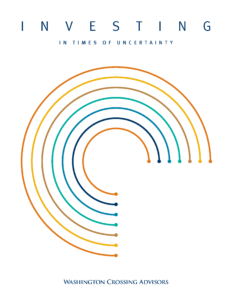Insight & Commentaries
Russia’s invasion of Ukraine, and the West’s initial response, casts a veil over Eastern Europe. This veil of uncertainty can be unsettling as we confront many unknowns. This week we look at what actions are being taken and how these actions may influence the investing landscape.
The stock market is near $50 trillion in value, about $15 trillion greater than before COVID-19. Stock values rose far faster than bonds, market earnings forecasts are hitting new highs, and companies are finding it easy to borrow. Yet there are signs that this happy situation could be poised to change. This week, we look at some recent evidence to support this claim.
Where do you want to be invested when faced with the prospect of a bear market? Some say that high dividend yields provide protection when stocks fall. This implies that since the yield rises as the stock price declines, new buyers will be attracted as the price drops. Such buyers could help establish a “floor” below the stock. While this sounds good in theory, we find scant evidence that it actually works in practice. This strategy fails when needed most because “high yielders” tend to be fundamentally weak. While some high-yielding stocks may be good bargains, most high yields reflect…
We publish this year’s Viewpoint 2022 amid ongoing recovery from an unprecedented pandemic. Signs of continued growth are apparent despite new COVID-19 variants and anticipated policy shifts. Long-run return expectations fall this year in as valuations and profit margins are elevated for stocks. For fixed income investors, surging inflation and expectations for rising rates are of primary focus.
Despite an ongoing economic recovery and bull market in stocks, we see a growing set of reasons suggesting some caution may now be warranted. In this week’s commentary, we will lay out these reasons and offer some ideas for navigating more challenging market environments.
With the U.S. stock market near highs, we look at the role “beta” plays in portfolios and why we favor combining “beta” with fundamentals. We find that 1) the pandemic era brought a rise in average “betas”, and 2) that “betas” behave differently based on fundamental quality.
In the very long run, it is growth that dominates other drivers of return. In this commentary, we look at why valuations and profit margins matter less than growth over time. With profit margins and valuations at or near highs, we conclude that we should not depend on further increases in margins or multiples for return. Instead, growth and dividends will become more important for us as long-term investors.
As the consumer price index rises faster than any time in 40 years, we look back at how American economist Milton Friedman and statistician Janet L. Norwood helped shaped today’s understanding of “inflation.”
After an initial strong run, signs of stress may now be emerging in the global recovery. Moreover, we note that financial markets appear priced for strong growth, record profits, and limited financial stress among corporate issuers. Given this backdrop, we now tactically reduce equity exposure to neutral following fourteen months of significantly overweight equity exposure.
The pandemic provides a test for our crucial proposition that dividend growth points to quality. We look at recent evidence since the pandemic’s beginning to test this proposition. We find great similarity in performance of dividend growers and high quality on the one hand, and dividend cutters and low quality on the other. We also question whether the risk of owning this year’s outperforming low-quality, dividend cutters is really worth the much higher volatility of such stocks.



